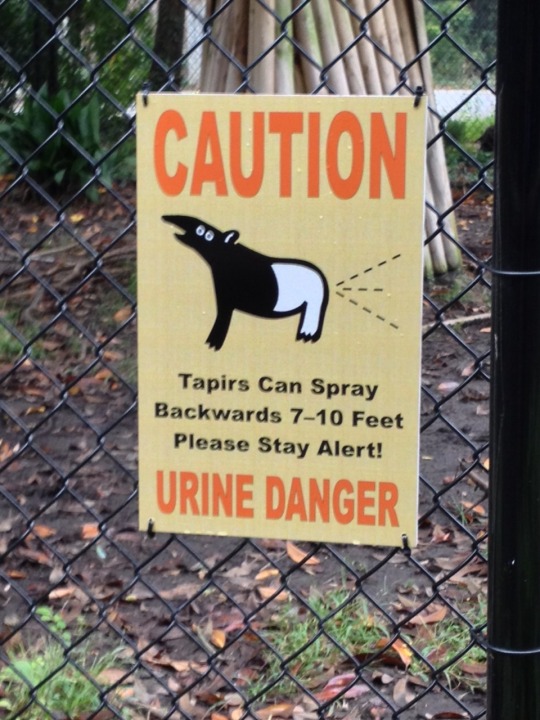Text
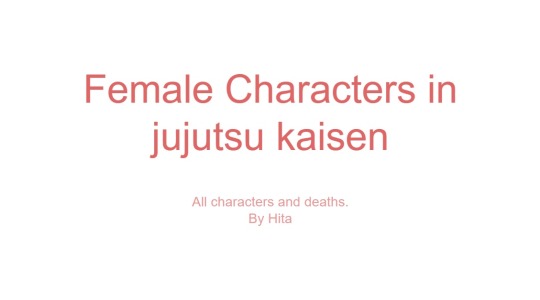
JJK - Female Chars
Hi I’m Rita. I’m brazilian of japanese descent. I’m a fujoshi and I've been reading manga since the early 2000s. I especially love shonen manga but I read a lot of genres.
Personagens Femininas em Jujutsu Kaisen - uma análise em contexto.
Jujutsu Kaisen Female Characters - A Contextualized Essay
This is a response and an essay about female characters in Jujutsu Kaisen. I watched some videos and read some threads about it and I think many people are missing the point. So I’m adding my opinion. A criminal act, I know.
First of all, we know from interviews that Gege Akutami went to an all-boys school as a teen but, after that, we don't know, and have no confirmation anywhere, that Gege identifies as male. Gege uses both “watashi” and “boku” to refer to himself, and can be a bit ambiguous in japanese. I'll be using he/him for simplicity, but we do not know for a fact. An argument can be made that “he” used to play with his wiener among his friends, but that’s not gender. I don’t think Akutami’s gender is important for this essay, but I also thought it was important to get that out of the way. Although he is probably a man.
Now, the main issues I’m seeing here and there are:
> People created weird expectations about the female characters and were let down;
> The women have “support skills”.
> The women fades away at some point and are not part of the narrative anymore.
JJk is regarded by some as “The Manga For Female Representation”it is not. And it never was. I don’t know who gave anyone that idea. JJK female characters are good. They are well written. But they are not perfect.
But! I can say more: They’re as good as the male characters in this story.
But let’s start at the beginning, what does a “good female character” even mean?
While that may be different for everyone, for me it means the women have drives, stories and personalities that are independent from the male characters. And even better if they pass the Bechdel-Wallace Test, and the Mako Mori Test¹, but those are optional. Those are the BASELINE.
There is an infinitude of manga with good female characters, In Shoujo and in Josei we frequently have deep and connecting stories of female narratives. But we crave and seek them in Shonen and Seinen manga as well, manga that are not intended for female audiences.
BUT! Many women, like me, enjoy reading shonen with their crazy magic systems and power levels. And the stereotypical female character hurts us. The misogyny is too blatant. Too many boobs and too many panties. The beach episode, or the bath scene, with pervert males and boob-grabs. The male gaze. The characters that are insecure for having small boobs. The characters that fall in love with the male lead because he touched her once. The hypersexualized outfits... the list goes on and on. We’re tired of that and many women I know dread shonen, for this specific reason.
And this IS a merit of Jujutsu. The female characters dress normally and are treated like, well, like any other character. They are not overly sexualized. Even the sexy characters are fully dressed, like MeiMei. That was shown naked on a cover art, but we didn’t actually see anything.
There’s this argument about Uro, because she’s a naked lady in the sky dressed up with the sky. However, there’s a difference between a naked body and a sexualized one.. Sure, if you think that’s sexualization that’s a completely valid point. But we never see a JJK girl slipping on a banana peel just to flash her panties. The only “sexual harassment” ever presented is Aoi Todo asking everyone he meets what’s their type of girl, the questions he learned from Yuki, his master. Todo is also the guy Akutami chose to draw when asked to make a sexy pinup. Todo is also obsessed with a girl idol, a trait that I know everyone would look down upon if he was a girl with a favorite male idol.
The only time I, personally, felt the woman was naked for no reason at all, was that cover art of chapter 218 with naked Yorozu. And the times she ran naked towards Sukuna in her flashbacks. One character. Out of 116.
The “beach episode”, in jujutsu, would be the Okinawa part of the Hidden Inventory Arc, where the point was for Riko-chan to feel alive one last time, and there was not even one smidge of sexyness in that scene. Her swimsuit was demure and she was wearing a cute beach-coat.
So here we are now. The first point. The expectations.
I was there and I remember Bleach in 2001. Kuchiki Rukia was among the first female characters that made me think “wow! this one is NOT LIKE OTHER GIRLS! SHE’S NOT LIKE THE OTHERS!”. She had a personality, didn’t know how ro draw, slept in the closet, was short and upfront, confident, she was professional, she was strong and she had a life! But it was a weak effort. Bleach fell flat. The entirety of the Soul Society Arc was centered on saving Rukia and in the end she never actually did anything. The other female characters were basically petite or big boobed mamas that never actually helped the narrative move.
Naruto was a disaster. We all know them. The best written (female) character is Tsunade, but she was written to be “The same personality as the first Hokage. Her backstory is because of her brother and she only made decisions because of Jiraiya and Naruto. And also she does whatever she can to stay pretty and young.”. Sakura never does anything, she heals Kankuro at the beginning of Shippuden, and then punches down a dying dinosaur at the spin off Naruto: Sasuke's Story—The Uchiha and the Heavenly Stardust: The Manga. Ino just came and went to be the pairing of Sai. Hinata became a housewife... AND DON’T let me even start complaining about TenTen. She didn’t even get a last name.
One piece has good female characters, yes. Their personalities and story lines and strengths are awesome. But it IS a bit jarring how so many of them are drawn sexy. (please watch MelonTeee videos about one piece characters)
And those were the Big 3 shonen manga of the early 2000 - When I was a teenager.
And when Gege Akutami and the other current shonen authors were teenagers.
You can see it clear as day that the big 3 influenced Jujutsu. Be it in the art, or in the way the characters dress. I can see it in the way the characters fight.
And I can see the progress of the last 20 years.
Remember Shaman King? The female characters barely spoke. Tamao “took Anna’s personality” in flowers; Eliza Faust never spoke, not even when she was alive. Ana’s motivations revolved around Yoh.
Remember YuYu Hakusho? Tell me what Botan, Keiko and Yukina did in the original story. Only Genkai was really a character. Mukuro was more interesting when we didn’t know she was a girl. Think about the Bechdel-Wallace test again. Fun female characters, but none of them mattered.
The female characters of Jujutsu have motifs and stories and drives that are not related to male characters. Maki wants to be the head of her clan to save Mai. Mai wants to survive. Nobara wants a boyfriend, but she also wants to be herself while doing her duty, she wants to be authentic with herself. Miwa wants money. Uro wants to win the culling game. Many of those “could” be male characters. But some can’t. If you change the gender, you change the story, so they are important female characters, not only characters. Put a pin on this, I’ll get to this again later.
The backstory we see when Mahito attacked Nobara is solely hers. It’s about not wanting to be mistreated for who she is. It’s about going to Tokyo to find a better environment to be herself. And she goes and finds it.
Actually, Nobara’s plot is about trying her best to be feminine and to be herself and to be considered strong in a very patriarchal society. Not only the jujutsu's one, but also Japanese society.
The female characters in Jujutsu ARE well written. Point blank. But please read the rest to see how people could be let down by it.
The second point, all the female characters have support skills.
This is not true, but also not-not true.
Is Nobara’s a support skill?
So, the technique Nobara uses is called “Straw Doll Technique” and it’s based on Ushi no Toki Mairi (丑の時参り). Wikipedia says:
“[It] refers to a prescribed method of laying a curse upon a target that is traditional to Japan, so-called because it is conducted during the hours of the Ox (between 1 and 3 AM). The practitioner—typically a scorned woman—while dressed in white and crowning herself with an iron ring-set with three lit candles upright, hammers nails into a sacred tree (神木, shinboku) of the Shinto shrine. In the modern-day common conception, the nails are driven through a straw effigy of the victim, impaled upon the tree behind it.”
So it’s not a support technique, but it is one related to women. I flashed this one out because people think it’s voodoo when it is NOT. Please research Vodun and its history. Nobara’s technique is a traditional japanese witchcraft.
I can list every character and go one by one, but let’s not do that. Many do have support skills (like Shouko, who is a healer, and Utahime, who is a buffer). But many don’t (like Yuki who has the power of the concept of mass, and Hanyu, who has airplane hair). About their stories, Momo’s whole life was supporting Mai, and (I know she’s a side character, but) Saori doesn't even HAVE male character around her at any given time. Hanami is a flower and a curse of nature itself.
I will not be disingenuous here. The thing is, they are mostly for support. Yes. Mai creates a sword for Maki. MeiMei uses a huge ax, but her ability is surveillance because she controls crows. Angel can extinguish techniques, but “she’s weak” so she “only helps the male characters”.
The worst part, for me, is how many of them only exist in favor of male counterparts. Angel’s back story is about Megumi. Rika-chan died for Yuta (in Jujutsu Kaisen 0). We never actually met Tsumiki, but Yorozu was obsessed with Sukuna...
I said “not-not true” because all of those things are also true for the male characters. You see?
Gakuganji is a buffer, like Utahime. Inumaki use words for crowd control. UiUi can teleport. Mechamaru can control dolls. Arata Nitta can “stop existing injuries from getting any worse”. Yaga can put souls into stuffed animals. Amai can create flans out of his blood-sugar. All of those would be read as “feminine” if they weren’t being used by male characters.
Even Aoi Todo, his innate technique is “exchanging places of things with curse energy”, and it can only be used to help anyone who wants to go there and punch. If he was a girl, a girl obsessed with an idol, that has a “supporting technique” would “she” be deemed a badly written character? Food for thought.
What? You’re telling me the female characters are “superficial”? We know more about Nanako and Mimiko than we know about the Kappa guy. We know as much about Takako Uro than we know about Ryu Ishigori.
Even Yuuji is sometimes delegated to a supporting role. Against Sukuna he is there to trigger Higuruma’s domain and another time when they went north to recruit Hakari. He only became THE protagonist, after every single one of the other options were out of the table.
Important Tangent About the Techniques
I believe the techniques are about the things conservative Japanese society deems “improper” in any way. Things the mainstream deem possible, but “you should do it in secret”.
The three big clans deal with Space (and they are the most powerful and revered), followed by Shadows and Blood. And those are from a time where sorcerer's were accepted by Japanese society. Now they hide in plain sight. So the three families get a special pass. “Nowadays” the techniques are ebbed in a kind of shame.
Other powers include: Gakuganji’s guitar, Hakari’s pachinko, Kirara’s constellations, Nanako’s photo manipulation, Ogami’s incorporation of the dead, Junpei’s venom, Naoya and Naobito’s animation-frame-counting, Charle’s manga panels, Reggie’s contracts and the list keep going.
SIGH
There are some shonen stories that can take place anywhere. Ichigo doesn’t NEED to be japanese for Bleach to work. As well as Yusuke (Yu Yu Hakusho) and Shinji (Neon Genesis Evangelion). They could all be Brazilian and the story would be basically the same. Naruto, Goku, Asta and many others are from worlds that aren’t ours and the rules need to be explained to the main character. Jujutsu is not like that. It’s absolutely impossible to separate Jujutsu’s narrative and worldbuilding from Japan.
As a friend of mine said: If you want to write a fanfic of JJK in China, you gotta reforge the whole worldbuilding from scratch, because Chinese society sees the internal energy of people in a different way. The Jujutsu society only works the way it works because it’s in Japan.
The powers, the energy and its relation to the world, the Heian roots, the curses and how to exorcize them... It’s all VERY japanese.
Remember my pin? So, the female sorcere’s need to deal with the inherent misogyny in jujutsu’s patriarchal society. The manga makes it very clear that it’s an even more conservative society than modern Japan. Maki and Mai’s mom walked two feet behind the man in the Zen’in clan. Momo said that Maki wouldn’t understand Mai’s pain because she let go of the society's expectations that were crushing her sister. Yorozu did her best to be recognized by the best and still couldn’t do it. Again, many of those are trying to survive in this environment, but the struggle is intrinsic to their gender and the relation they have with society.
A quick side note: Because of this (being intrinsically Japanese), Akutami sometimes doesn’t explain concepts very clearly. He assumes the Japanese viewers understand it. And they do. My humble opinion is that this is for the best. Akutami is not that good at explaining stuff. I love this manga with the strength of a thousand suns, but holy moly, are the techniques badly explained.
Anywho.
Screen Time
You can argue that “female characters have less screen time than the males”. Yeah, sure. But it’s because we have lots of screen time about ongoing fights. Satoru vs Sukuna takes 13 whole chapters! But, in universe, this was about 10 minutes? Up to an hour at best? And it was to establish Sukuna as a threat. But if it wasn’t for MeiMei, the others wouldn’t be seeing it; if it wasn’t for Angel, Satoru wouldn’t be there. The participation of all genders is prevalent in all arcs. The only ones with characters of only one gender are Junpei’s arc, without girls; and Maki’s arc, where all the men are destroyed relentlessly leaving only Maki alive.
Back on Track
Another important thing about Jujutsu Society is that it’s deeply ableist.
Yeah, Nobara had a schrodinger's death and came back after 141 chapters had passed, wearing an eyepatch. But Inumaki as well, he fought, got hurt, and then disappeared to come back as a recorder. You’re either perfect, with all your members attached, or you out. Remember? Mechamaru hid himself all his life, until he made a Binding Vow with Mahito, so he could go out in the sun.
I also think that Aoi Todo’s comeback is a plot twist, exactly for that reason. You WOULD think his boogie woogie was dead after he lost his arm, but he came back with the queixada and is kicking. Angel also came back without an arm. Both of them are amazing for that.
I believe none of the hurt characters would come back if it wasn’t for the extra-ordinary occurrence of Sukuna. That’s why the reveal of them coming back is such a strong plot-twist, because the expectation of the abandonment was already there.
“Yeah, but Nobara didn’t have to be left out like that.” you say.
Like what? I ask. Like Nanami’s death?
It’s not about Nobara. Nanami had a compelling personality, we loved him. He was a responsible adult and had a cute and short backstory about cooperative work. He came back to Jujutsu Society and died.
You remember that confusing chapter of Yaga’s death? It showed he used the soul of Kusakabe’s dead nephew on a stuffed doll, so that his sister would smile again.
Think about Junpei. He was bullied at school, with cigarette burns in his forehead, and developed a technique involving poisons, with jelly-fish shikigami. Tell me he is a bad character. And, even more, tell me he would be a bad character if he was a girl.
No. They wouldn’t be. They are all good characters.
Anyway, I think it’s not about the technique. It’s about how you use them.
Then, I completely agree, the main parts of the fights are done by the male characters.
And I don’t think it’s because the female characters are badly written, I think it’s because Akutami might have an internalized misconception about women. But put another pin in this thought here.
The only one that “goes there and punches” is Maki, and she only does that because she’s a mirror for Toji. This is a tragedy, because she could be so much more. But, at the same time, what Toji represents is important to the narrative, and his legacy needed to be part of the story. I’m glad it was Maki and not some boy. And even Toji’s legacy is unimportant for Maki’s own story, it’s important for the plot and for the author, but not for the character. Maki doesn't even know who Toji is and she’s developing into her own persona. She is fully herself and she isn’t Toji.
The last point I want to discuss is how the narrative leaves the women behind.
So, I’ve seen people out there saying that “Jujutsu Kaisen is a character-driven story” and I completely disagree.
I think Akutami created a trap. He has a story to tell and he made the characters think they had opinions on the matter, but they didn't. In the first page of the first chapter we see Megumi calling Gojo to tell him “Sukuna’s finger was missing from the spot.”, missing from a meteorological station. What the flying ***** was Sukuna’s finger doing in a METEOROLOGICAL STATION on the way to Yuuji’s school? It was a trap Kenjaku made. Because they created Yuuji to be Sukuna’s vessel. Yuuji never actually had any choice. It was a plot-driven story all along. I mean, the choice he made to eat the finger is solely his, but Kenjaku was his mother and they knew the kind of nature Yuuji had. He would be one to protect. they named him “yuuji” (悠仁) . Akutami said he chose this name because it sounded normal and he had a friend named like that, but it means lasting/lingering virtue.
BY THE WAY, It does not matter what definition you use: Jujutsu Kaisen is a dark fantasy. Because I didn’t not know if the main character, Yuuji, was even going to survive till the end.
The only important characters in Jujutsu Kaisen are Gojo, Sukuna and Kenjaku. The rest is rest, and Gojo died and Kenjaku is nonbinary and also died. In the end, Sukuna also died.
Satoru Gojo and Suguru Getou both wanted to change Jujutsu society in some manner. This is very different from the normal shonen tropes. The story Akutami created heavily criticizes Japanese society. And it’s bold, I’ve never seen something like this. Usually, the characters of secret societies want to protect the status quo. But not Jujutsu. Akutami even kills off the American Defence Forces and destroys one of the biggest subway stations in the world.
Gojo intended to groom and create a new generation of sorcerer’s that agreed to his ideals, so he could overtake the conservative man controlling the world behind the scenes. That’s why he wore the uniform, to be relatable to the students, approachable. That’s why he killed those men behind the curtains. To get to make the decisions himself.
Geto wanted to anihilate the “monkey population” so people could be free from the fear of curses.
And they both died.
Because Kenjaku (again, nonbinary), wants to experiment with the human form and become MORE.
This leads me, again, to the female characters. They disappear.
For a while, my thoughts were “I would like to see if Nobara survives”, but that’s not the point. The point is that she was not part of the narrative for a good while. She was the female lead of the story, she was the perfect counter for Mahito’s skills and she took a hit and was no more. We felt betrayed. Even if she came back afterwards, it took TOO LONG.
Yuki was even harder to watch. She was built up as Todo’s mentor. She was one of the class S sorcerers from Tokyo. And her fight with Kenjaku was intense and weird, but the importance was to establish Kenjaku as a threat, and to clarify their powers. And that’s a shame, because we wanted her to be more than that.
Bad ones
I think there are some badly written female characters in Jujutsu.
The middle school friend, Ozawa, was cute and sweet and showed us that Yuuji can see beauty in everyone. She used to be made fun of, but never from the protagonist, and never from the framing. We don't read that part to think she's funny. And even when she's short and fat, the society declares she needs to hide it, and she does, but this isn't a bad characterization. “I'm not like other girls” is not necessarily a good thing. It was also an homage to yu yu hakusho.
Yorozu, Remi and Kurusu Hana are some women that live because of the man around them. Their motivations and strengths are enhanced by their submissiveness.
But, wait a min, isn’t UiUi the same? He is devout to his sister. Ogami’s grandson doesn’t even have a name and was turned into Toji. Getou had a whole group, full of characters we know nothing about, besides Miguel, Larue and Nanako and Mimiko, their names were Manami Sua and Toshihisa Negi. The Kappa Guy and the Katana Guy are both a mystery.
We can argue about Hana, because her background revolves around liking Megumi and wanting to defeat “the fallen one”, but her relationship with Angel is solely hers.
Tsumiki was a red herring and it was pitch perfect. We never considered she wouldn't survive. It was amazingly written. What a curveball. When Yorozu assumed the body we knew the situation became hopeless. “The poor sister we must protect” was beyond salvation.
Non binary people.
We have Kirara. We have Kenjaku. We have Uraume. Isn't that amazing? Three named non-binary characters.
And a few agender curses, but those are rarely named or have personalities. But many are also male! That’s why I decided to read Hanami as female. But that’s me.
Good and evil and we don't know their sexuality. And it's all fine.
I just wanted to point it out before I forgot.
Final Thoughts
The conclusion is that Jujutsu Kaisen is not about being the beacon of female representativity. Jujutsu is just a measure for us to see how much we progressed in the last few years of shonen. It’s a mirror. You can think of Akutami as someone with internalized misogyny to work on (remember that pin?). But that’s ok, people can improve.
And this mirror shows us female characters in a non sexualized framing. We never saw panties. The nakedness wasn't for men to ogle. We never got a scene of “let me feel the size of your boobs” or even “I'm sad my boobs are small”. We don't have a perv character for comedy (male or female). Aoi Todo and Yuki asking about their type is jarring because there's nothing like it in the story. And they justify it by saying “the answer tells me about themselves” and it's somehow true, isn't it? They don’t aggressively persecute people who don’t answer.
If you treat JJK as the peak, it means we can never, as a culture, go up from here. And that’s a shame. Because we know it’s not true. Now we know how bad Rukia was. And I can’t wait to see how JJK ages. And this is a good thing.
There are better shonen for female representativity. I’m rather fond of UndeadxUnluck (even with Andy touching Fuuko in the first chapter, please, begin reading from the 2nd. It is one of the most epic love stories I’ve ever read.), and did you know that Kaguya-Sama Love is War is a shonen? Blue Box is shonen and Blooming Love is shonen. All of those are romance stories. The thing is, because they’re from a shonen magazine, they don’t need to conform to shoujo’s narrative expectations. And, above all of those, Akane-Banashi is the best non-battle-battle-manga of the decade, and it has a female lead.
So we should celebrate.
Thanks Akutami-sensei, for all those years of shonen battles, and for your characters.
Thank you for listening. I have the transcript in the description of the video. I apologize for any mistakes and viva Brasil!
1 note
·
View note
Text


"cafe date? Fine. Whatever. But you're paying"
Just a lil doodle of the new jjk cafe official art, ty for the support! :3
11K notes
·
View notes
Text
What decides whether a manga is shojo or not is the magazine.
And what decides what magazine a manga runs in is Where did the artist debut?
There are exceptions, especially in the last decade or two or at the very beginning of post-WW2 manga, but if you’re talking about the history of manga and manga demographics, this is the most important, unavoidable factor.
Not the themes. Not the genre. Not the gender of the artist (or even the audience, honestly). The magazine where the artist made their debut.
I feel like one thing (there are many things, honestly, but this is one of the major ones) people outside of Japan lack in their understanding of manga is magazines. Manga are serialized products. When they are collected into tankobon/graphic novels, this is (typically) the second iteration of a manga, and the imprint of manga tankobon (typically) follow the magazine. Manga that ran in Ribon, a shojo manga magazine, are published in the imprint Ribon Mascot Comics, which is a shojo imprint because it publishes manga first serialized in a shojo magazine. And so on. And what manga run in Ribon is decided by which artists manage to debut in Ribon. Nothing else (typically). (I keep saying “typically” because exceptions always exist and there are magazines who run things differently but this post isn’t about those exceptions.)
I feel most non-Japanese readers lack that chronology of publication, as well as that chronology of an artist inside a magazine. By and large, manga artists make their magazine debuts by entering a magazine’s “new talent” contests, which winners (and losers!) are made public to the readers. Therefore, the observant reader will know a manga artist before their first manga even runs in the magazine. The slightly less observant reader will know the artist from their debut. And then, if all goes well, the audience will follow the artist as they grow and refine their technique and storytelling, until they quit manga because they were never able to make it big, or until they make it big – and it’s only when they make it big that non-Japanese audiences are introduced to them, either via an anime adaptation or a graphic novel release which skips every single step of what led up to this graphic novel release. And at this point the demographic is declared to non-Japanese readers, who (sometimes) go “But WHY?” precisely because they have missed out on all of that chronology.
Another important aspect of this chronology is an artist’s relationship with their editor. This is something non-Japanese audiences have pretty much zero insight into, unless they read the few autobiographical manga that have been released outside of Japan. When a promising new artist gets the attention of a magazine, they’re assigned an editor. The editor helps them grow and draw manga that is fit for publication. After their debut, the editor typically stays with them and helps them grow even more and (hopefully) make it big. One of the reasons manga artists are so tightly connected to specific magazines is because (from the artist’s POV) they are tied to specific editors who discovered them and helped them make it in the manga business, and (from the editor’s POV) discovering new promising artists and helping them until they have a hit series is closely tied to an editor’s career prospects in their company (publisher). For example, Weekly Shonen Jump’s editor in chief between 1996 and 2001, and the current CEO of major publishing company Hakusensha, is Torishima Kazuhiko. He got those jobs largely because he discovered and was the long-time editor for Toriyama Akira. Editors have huge, vested interest in keeping artists they discovered within the same magazine or at the very least within the same publishing house, and artists have vested interest in staying with the editors and magazines that discovered them. (Exceptions exist and sometimes this relationship completely falls apart, as any other business relationship can do.)
ANYWAY, just to take an example that I keep seeing people talk about lately because of the anime adaptation coming out: this is why Banana Fish is shojo. It ran in Bessatsu Shojo Comic, which is a shojo magazine, and it did so because Yoshida Akimi made her debut in the Shojo Comic line of Shogakukan magazines, and she still continues to write manga aimed at women in Shogakukan’s shojo line of magazines because of the chronology of her life as a manga artist. Not because of the themes of her manga. Not because of the genres. Not because she’s a woman. Not because someone looked at Banana Fish and said “This is actually totally shonen! But we’ll put it in a shojo magazine because the main characters act kind of gay and the girls enjoy that.” That’s not how manga publishing works.
463 notes
·
View notes
Text

I haven't found a dang place with them all.
5 notes
·
View notes
Text
Welp. My paper is done and marked, so here it is. This is the first sociology research paper I’ve done and I was limited by content and page count, so moderate your expectations accordingly.
I’ll try and @ everybody who asked me to post it. Sorry if I miss some people. This thread got really out of hand.
Many thanks to @athingofvikings for the editing and the support!
Edit: Also, I redacted the names of the people I’ve quoted on purpose. Please do not harass people because of my essay. Thanks! (Hopefully doesn’t need to be said, but just in case….)
Keep reading
2K notes
·
View notes
Note
Do not let the antishippers find the Got or House of the Dragon fandom cause they'll cry
Or Labyrinth, or Flowers in the Attic, or any one of Stephen King's books. It's almost as if the wider public understands that fiction can be both fucked up and entertaining without the need for a moral lesson following after, or that it's an indictment that you're going to partake in the things you read about.
Antis are so far removed from reality, and they have to remain that way in order to not have their beliefs constantly challenged and torn apart.
7K notes
·
View notes
Text
How to Calculate the Comparative Ages of the Dungeon Meshi Races
I've seen this topic come up again and again in various fandom spaces, so I figured why not make a post about it!
First thing's first: There is a little bit of inconsistency between the manga itself and the world guide, so obviously take all of the following information with a grain of salt.

(The average lifespan number doesn't really impact this in any way, I just wanted to include the information.)
The way you get these numbers is you take the other ages, and either divide them by 16 (our baseline for adulthood), or divide 16 by the smaller number.
Examples: 16 ÷ 1.1428571429 = 13.9~ (Rounded up, that's 14) 80 ÷ 5 = 16 So using this, Chilchuck, a half-foot that is 29 years old is roughly equivalent to a tall-man that is 33 years old. Senshi, a dwarf that is 112, is the equivalent of a tall-man 45 year old. Namari, a dwarf that is 61, is the equivalent of a 24/25 year old tall-man. Kuro, an 18 year old kobold, is the equivalent of a 22 year old tall-man. Mithrun, an elf that's 185, is the equivalent of a 37 year old tall-man. Pattadol, an elf that's 82, is roughly 16/17 Assuming I didn't make any dumb mistakes figuring this out, go forth and enjoy!
2K notes
·
View notes
Note
HII I love your art so much it's so expressive and it feels like theres so much movement in it! I was wondering if u had any tips or advice to help with that? I practice anatomy and expression so much but it seems like everything I draw on my own is so stiff!! Anyway I hope you have a great week :)) <3
Hi there! Firstly, thank you so much for the kind words, it means a lot that you would take the time to tell me!
Second- my advice is to take everything you've learned about anatomy and THROW IT OUT THE WINDOW!!!!!!!
... For now. Just into the front yard so you can keep an eye on it. But I have seen many artists concentrate chiefly on studying anatomy only to feel like their art ends up too stiff. My own experience has been to treat anatomy as a tool best used to correct an image in the later stages of construction rather than as your driving foundation.
If "correct" anatomy (however you choose to define that) is the priority of your undersketches, I find that you end up with a sort of Skeleton Song approach to drawing - y'know, the knee bone's connected to the thigh bone, etc etc. Whatever energy, emotion, or intent you wanted your drawing to convey is getting lost each time you split it into another anatomical segment. By over-focusing on individual parts, you lose sight of your image as a whole.
The key to conveying dynamic movement in motionless art is to ensure every element of your image agrees on and communicates the same action, the key to which is something called the line of action.
A line of action is simply that - an implied "line" with wich you lead the viewer's eye and communicate movement. Think of it as the core of your figure's action, simplified to its rawest form. By knowing this, you know what to emphasise and what to de-emphasise.
Well, art is a visual medium and I am better explaining with drawings than words or I'd never have picked up a pen in the first place, so:
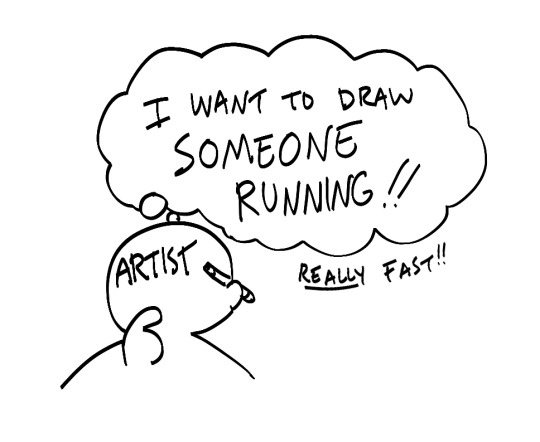
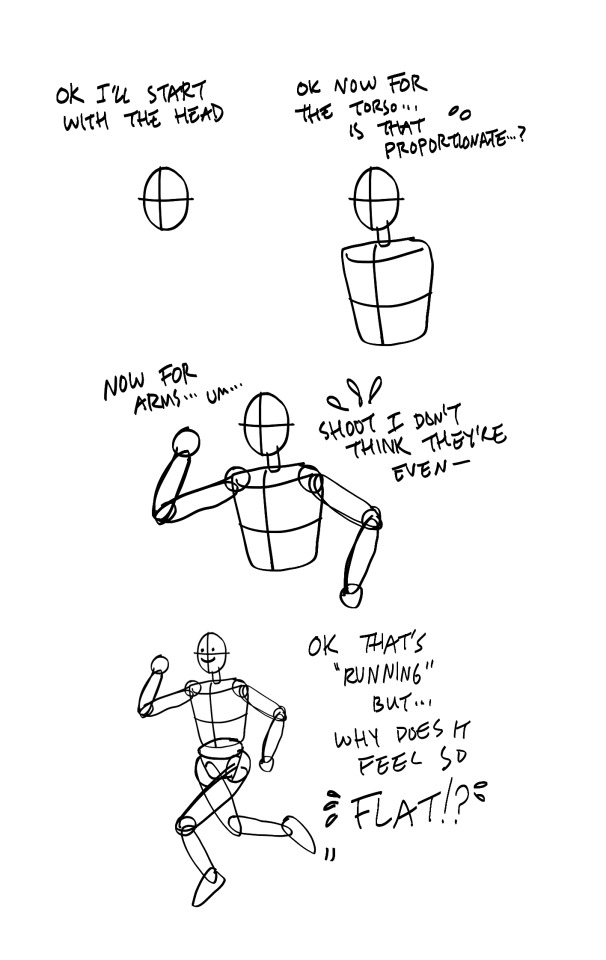

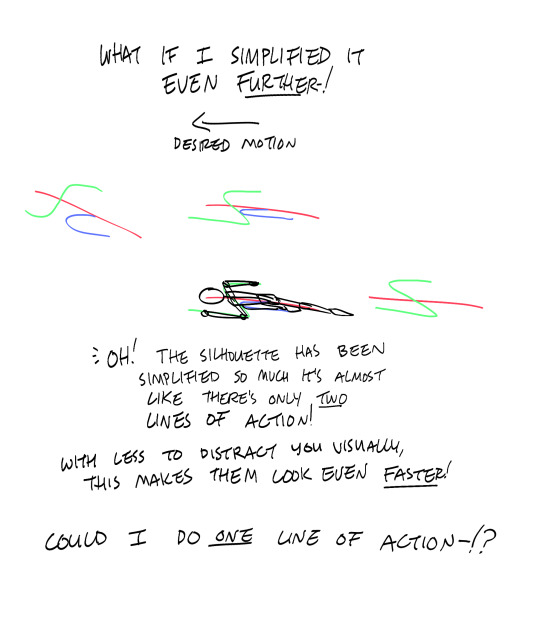
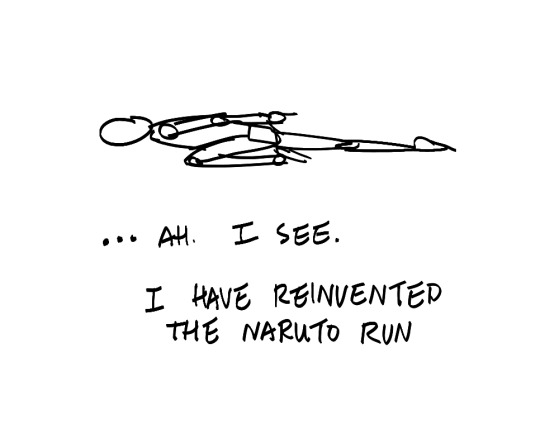
Images can have multiple lines of action, lines of action can complement and contrast each other, and a line of action isn't always as obvious as something like running. Imagine you're tring to make your art more "aerodynamic" to the eye. Since I draw a lot of One Piece fanart, I assume you're also familiar with it, and you can probably imagine how Oda uses "lines of action" when composing panels of Luffy punching something, Zoro slicing something, Sanji kicking something- etc etc. He's really good at selling the "oomph" of action shots by reducing visual clutter so that the impact of the action is greater.

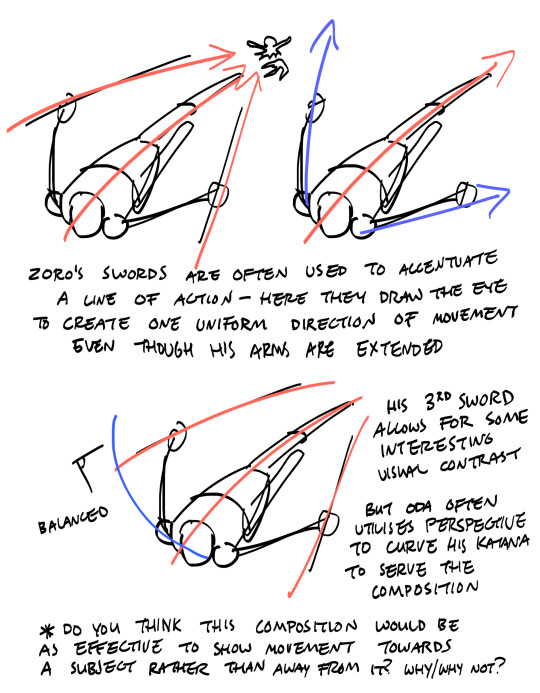

(The Monster Trio's abilities are all designed in such a way that allow for REALLY striking lines of action... you can tell Oda loves studying manga fight scenes and wanted to create a world where he could push these concepts to the limit, and it's no wonder One Piece caught the eye of animators even before it was serialised by Toei)
You're probably already noticing how line of action also feeds into composition and silhouette when it comes to conveying movement in an image. Basically put, once you've isolated whatever action it is that you want to convey, the more visual clutter you can streamline away from that action, the stronger an impact that will have on the viewer. A firm line of action, an uncomplicated silhouette for your figure, and a readable overall composition of your image/panel are all ways to minimise visual clutter.
You can also use this information to achieve the opposite effect! Sometimes the ideal action you want to convey is not fast, or powerful, or confident, and you can use the same principles.
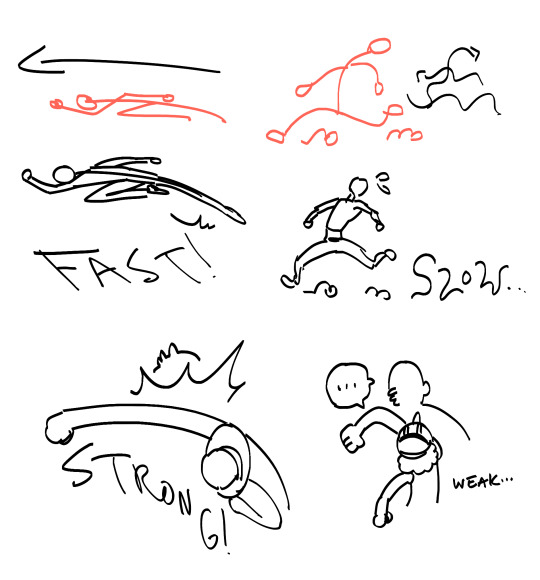
In fact, you can apply line of action to images that don't have any "action" in them at all. You can make a drawing of someone simply standing there feel more lively by applying these same principles to their body language:
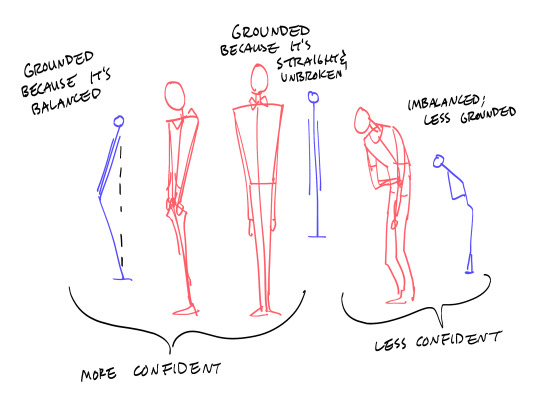
You can develop an eye for how to simplify movement down to its "lines of action" by studying real photos and other people's art. Try simplifying a figure to its silhouette, and then simplify that silhouette further to a stick figure. And honestly, a lot of this could be boiled down to "see your image as a whole and not just a collection of individual pieces". Set anatomy aside during the composition stage and bring it back in when you start building up the sketch.
Moving away from the line of action, my second piece of broad advice is simply to exaggerate more. Lots of artists subconsciously hold themselves back from pushing motion, expression, etc. out of concern that it will look "too much". Well, maybe it will- but you won't know that unless you try! You can always walk it back if you think you took it too far, but I think you'll be surprised by how far you can push your art before you hit that point.
My final piece of advice is to work on line confidence. Even if you follow the rest of this advice, if you have hesitant and scratchy lines, you're undermining the flow and punch of your art. The best way to improve line confidence is simply by practicing! Do a lot of quick, timed studies, and use a permanent medium like a ballpoint pen or marker. Focus on unbroken lines wherever possible even if it makes your studies look like garbo. I find traditional studies are best for improving line confidence, but if you'd really rather stick with digital then just don't let yourself use the eraser tool, and try using a chunky brush with limited pressure sensitivity.
And that's it! Don't stress about it too much though. Loosen up with your art and, like any other skill, you'll improve with practice, time, and analysing what you like about other people's art. Good luck!
2K notes
·
View notes
Text
I just realized the thing I’m planning to do actually requires me to get a tiktok.
*Dying whale noises*
1K notes
·
View notes
Text
Do I have the energy to bring this tumblr back to life, or should I build another one up from scratch?
0 notes
Photo
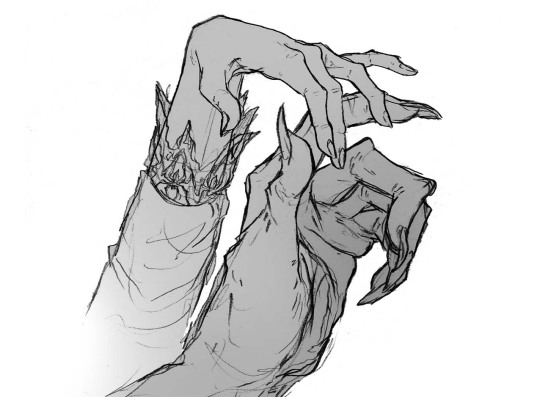
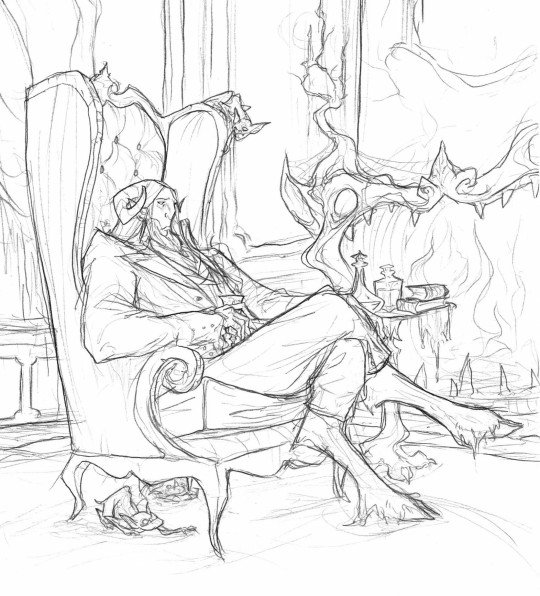
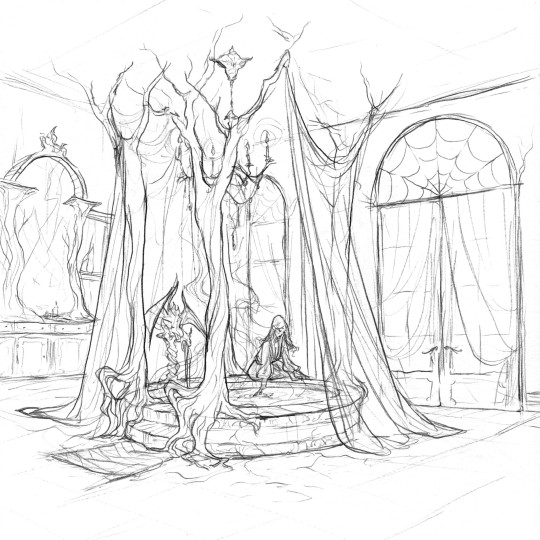
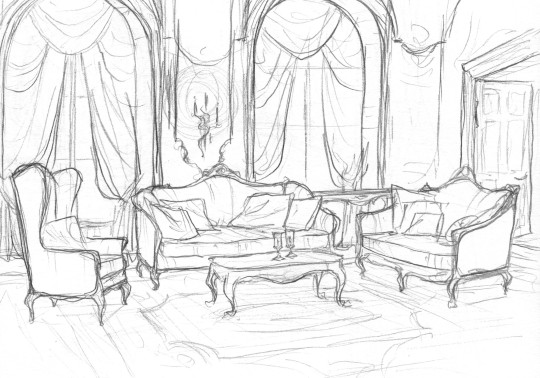
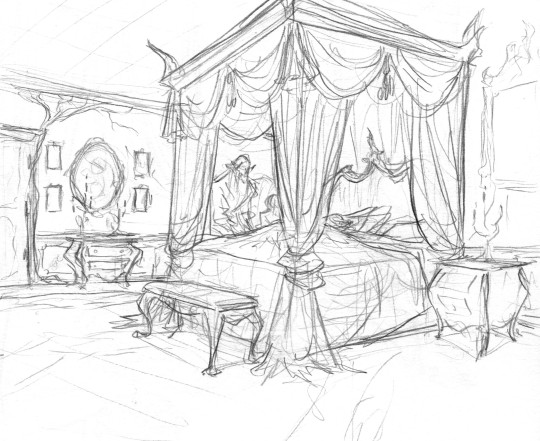
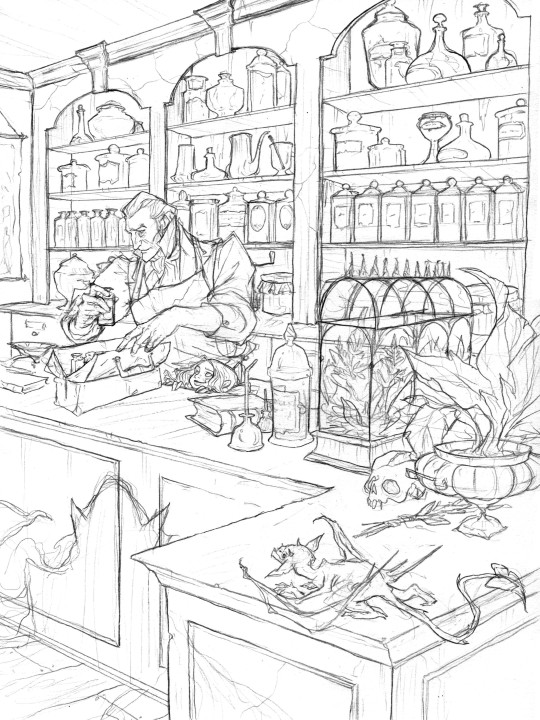
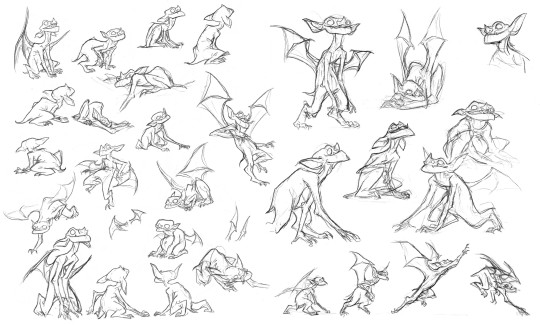
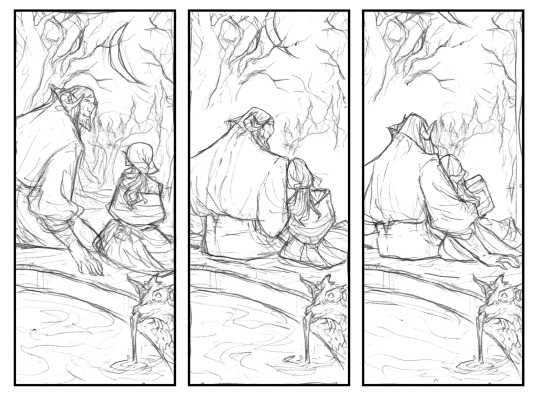
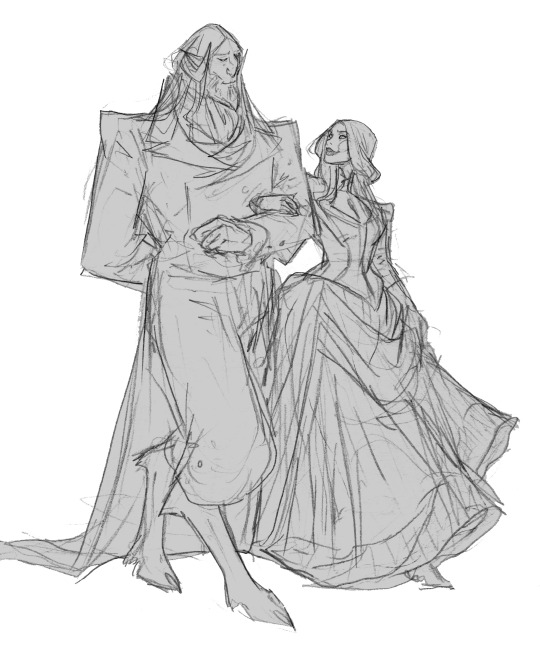
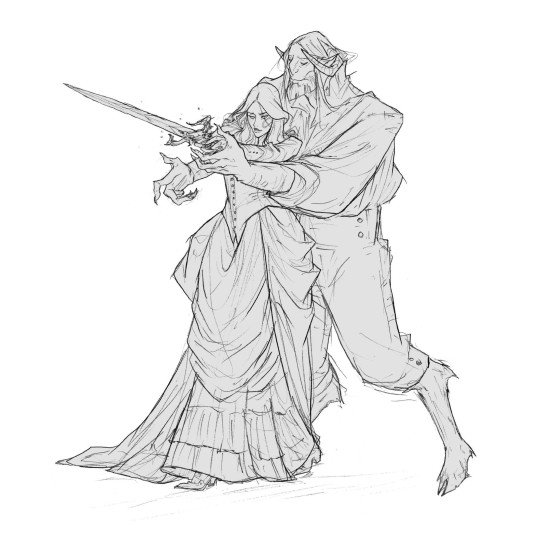
It’s been a while since I posted an update about my Beauty and the Beast project here! I’ve teased a few sketches on twitter and instagram over the past few months, and I thought I should share them here, too. A publisher has picked up the book, and so far I’ve got the manuscript and all the roughs complete. I still have a long way to go before it’s finished (it’s just over 300 pages!) and it hasn’t been officially announced yet, but I’m working on it! Hopefully details like the title and release date will be available soon.
7K notes
·
View notes
Text
wish list for people who don’t want anything
aka possessions which are just possessions, but which have noticeably improved my quality of life: for when people ask you “what do you want for your birthday/Christmas/graduation” and you instantly transform into St Francis and pledge fealty to Lady Poverty because your mind went blank
nice. new. sheets. I cannot emphasize this one enough. if you’re still using the same sheets you had in college, you should probably get new ones. get yourself some 100% bamboo rayon sheets—they’re silky and perfect for summer and great for sensitive skin! or, if you’re cold all the time, flannel sheets!
kitchen knives. or even just one really good kitchen knife.
new curtains—blackout if you are a creature of the night like I am
fleece lined anything, but especially sweatpants and hoodies. wool lined socks are also good. if you don’t have the option of coming home after work and putting on an entire outfit that is loose and fuzzy, you should change that, because you deserve that option.
cookie sheets with a layer of air between the top and the bottom. the bottoms of your cookies will never burn again.
kitchen scale!!! no more leveling off flour with a knife and getting it all over the table!! now all your measuring is just shoveling stuff in and out of bowls like you’re at the beach. baking is both more accurate and also way more fun.
coffee bean grinder. if you want to upgrade your coffee experience, this is a great one-time purchase. just-ground beans have a much better flavor than pre-ground.
CDs!! ask for a gift card and expand your physical music collection! or a collection of the DVDs for your favorite show!
95K notes
·
View notes
Text
I love the concept of Tooks. "Everybody in the Shire is very very businesslike and respectable and has no use for adventures except for this one entire family of mad lads who also run the municipal government"
40K notes
·
View notes
